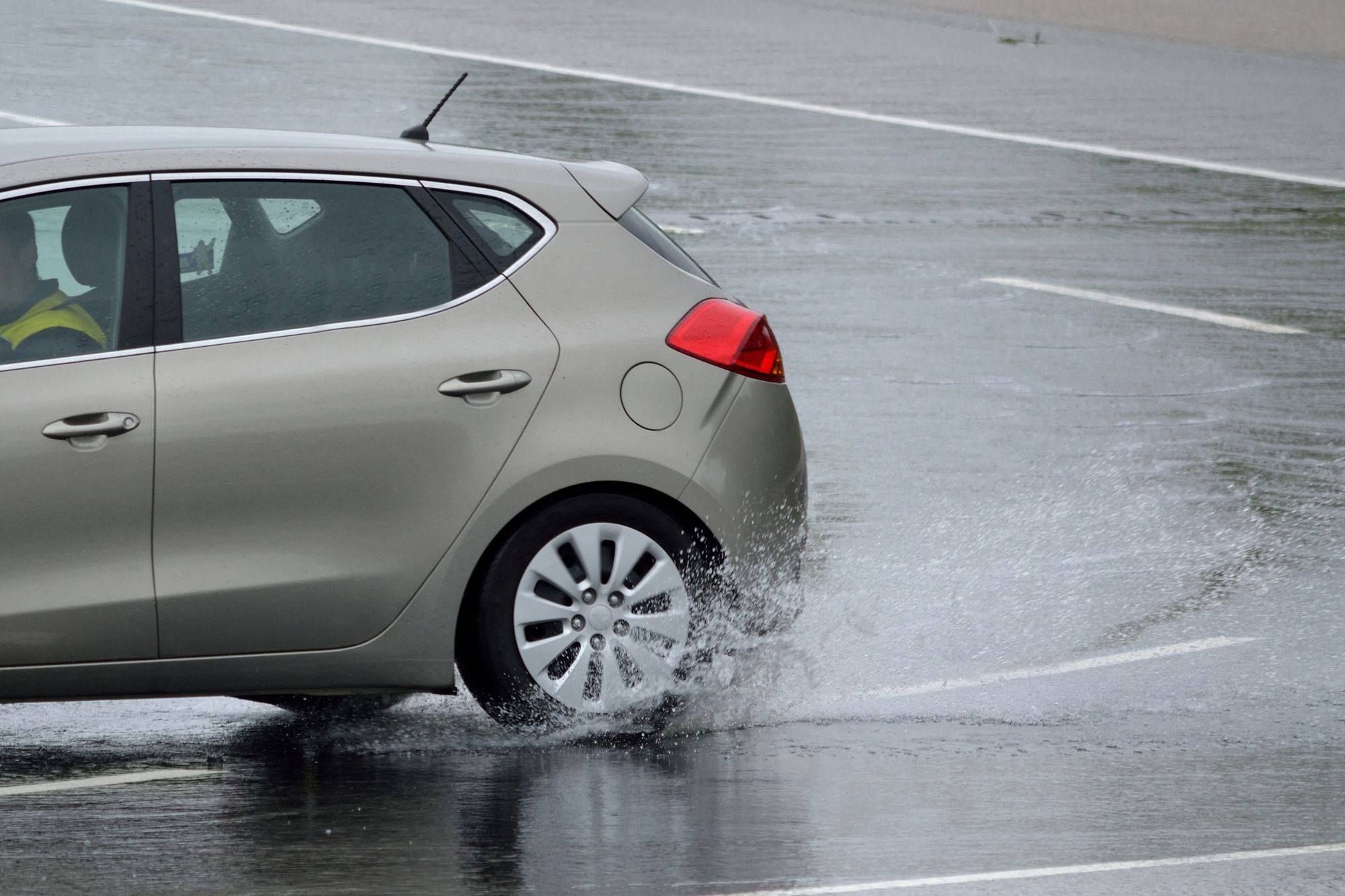As fall is coming to a close and winter is approaching, the rainy weather is in full swing. Unfortunately, rain brings plenty of additional hazards to drivers' daily commuting or longer trips.
Get a free quoteAs the rainy season continues, there are significant changes to the roadway that all drivers should acknowledge. Rain decreases the traction that a vehicle can attain from a road. Even little rainfall can bring motor oil to the road surface, reducing tire traction. A considerable amount of rain can get even more dangerous on the road. Heavy rainfall causes even less traction and, in more challenging situations, hydroplaning.
What Is Hydroplaning?
Hydroplaning, sometimes referred to as aquaplaning, is the term used to describe when a layer of water builds between the wheels of any vehicle and the roadway. This layer of water results in a significant loss of traction and prevents the car from responding to control inputs. Hydroplaning occurs when there is more water on the roadway than the tires can displace.
When To Be Wary Of Hydroplaning
Large puddles and other significant amounts of water on the road can result in hydroplaning when the tires cannot move the water to make contact with the pavement. Hydroplaning can occur at any time there is water on the road. Large build-ups of water, or even the first 10 minutes of light rainfall, pose severe risks of hydroplaning.
Light rain is accompanied by slick roadways that drivers often overlook. Large puddles of water, although more obvious, pose the same reduced traction risk.
Vehicles driving above 35 miles per hour have an increased risk of hydroplaning because the higher the speed a car is moving, the less time the tires have to displace the water.
7 Ways To Avoid Hydroplaning
Hydroplaning is often unexpected and can result in overcorrection, like many other driving hazards.
1. Slow down
An increased speed in iffy weather is never a good choice. When it rains, traction is reduced. By lowering your speed, you will have more control while driving and more reaction time in case something goes awry.
2. Don't use cruise control on wet roadways
Applying cruise control at high speeds during rain or on a wet road puts you at the risk of hydroplaning. Cruise control can make hydroplaning even worse, as it tries to keep your vehicle continuously moving at the same speed.
3. Avoid large puddles and stagnant water
An accumulation of water on roads heightens your risk of losing control as traction is decreased.
4. Make sure your tires are in good condition
Worn tread on tires automatically reduces the traction your vehicle can get on the road. Adding in the hazard of slick roads, you are at a much higher risk of hydroplaning. Buying the right tires, properly maintaining, and replacing them when needed are some of the best steps that you can take to avoid hydroplaning.
5. Maintain a safe distance
Maintaining the proper distance between you and other vehicles on the road is always a safe choice. It becomes an even more vital step when rainy weather is apparent. Maintaining a safe distance allows you the proper time to stop if needed and avoid a crash.
6. Properly inflate your tires
Much like worn tread, the inflation of your tires plays a considerable role in maintaining an excellent grip on the road. Improperly inflated tires can drastically reduce the control and performance of your vehicle. If your tires are underinflated, too much of the tire's surface is touching the road, increasing the friction. If your tires are overly inflated, the center of the tread can bow out and wear out first and faster, and the car has a less pleasant driving experience.
7. Get your tires rotated regularly
It is recommended that most drivers get their tires rotated every 5,000 to 7,500 miles. This allows for the tires to wear evenly. Often, the front tires on a car will wear more quickly than the rear. By rotating the tires, throughout their life, all four tires will wear evenly. This means you will be able to replace all four tires at the same time.
What To Do If You End Up Hydroplaning
Like any other unexpected occurrence when driving, hydroplaning can be scary. However, the most crucial step is to avoid overreacting and overcorrecting.
Remain calm
Maintaining composure is essential to any unexpected situation while driving. Remaining calm will allow you to think and act in a way that de-escalates the problem.
Slow down
It is crucial to avoid slamming on the brakes. This can result in total control loss and cause the vehicle to spin out. A gradual decrease in speed will produce the best results without further loss of control.
Pump your brakes
Using a light pumping action on the brake pedal will allow you to decrease your speed at a moderate rate, preventing further loss of control.
Steer into the skid
Although this may seem backward, steering into a skid can help the tires regain traction. Turning into the skid allows your tires to realign and can also help you regain steering control.
Wait until you regain traction
Once you can steer regularly, you are no longer hydroplaning. Once you have regained control of your car, drive cautiously to avoid further hazards.
As fall ends and winter approaches, weather produces dangerous conditions and roadways. Making sure that your vehicle is properly maintained can help guarantee safe travel.
If you haven't already, book an appointment with Wrench to ensure your car is prepared for the changing weather.
Book an Appointment

